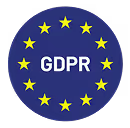You just sent out a quote detailing your product or service’s commercials to a potential customer. They love your offering, but are worried they may not be able to convince their Finance team or CFO.
Here’s where you can go the extra mile: create a detailed and impressive proposal document that your prospect’s POC can use to convince their CFO! If you put the right ingredients into the proposal, it can be a document that the CFO can’t ignore or push back.
But where do you start?
This article tells you how to go about it, but you can always download our free ready-to-use template (that our team uses and has seen success) to create the perfect proposal document and win over your customers’ CFO and get them signing!
First things first, here are some basics about proposal documents and how you can create one.
What is a proposal document?
A proposal document in this context is a formal written document outlining a company's product, process, or solution that requires buy-in from relevant stakeholders, like management.
It presents them with a persuasive case on why a particular product or solution needs to be purchased. It is often prepared with joint ownership between your account executive and the customer POC, and enables your customer POC to easily present detailed information about your offering, including key benefits, unique value, features, ROI analysis, and pricing to the decision makers. To further tip the scales in your favor, a proposal could include additional information such as post sale support experience and implementation plans.
An effective proposal is designed to provide a more comprehensive understanding of the offering and thus requires careful consideration of the ideal audience, messaging, and delivery.
As a vendor, a well-crafted proposal document can help streamline your sales process and close more deals faster. And help your customer POC know you have their back!
Why do you need a proposal document?
Often, a company's primary user and buyer may not be the same.
The person with the power to approve a budget might need some convincing on why they need to purchase or invest in your offering.
A proposal document is, therefore, necessary to instill confidence in your customers' CFO and convince them. You need to provide your customer with a proposal document that offers a clear and concise overview of why your product or solution is essential to their business and its potential impact.
Additionally, a proposal document can help address any concerns or objections that may come your way and provide a roadmap for how it will be implemented and integrated into their existing processes. It can reassure the buyer that the product or solution will not become ‘shelfware’ once it is bought. The document will also help your POC build a strong case within their team and champion your product or solution in their organization.
[.rt-box]💡 Want to know how Rocketlane champions its product within our customer's organization? [.rt-mb-16] [.rt-mb-16] Head here. [.rt-box]
What should a proposal document include?
Every proposal document should be detailed and ROI-focused. It should include the following:
- The purpose of your offering
- Why your offering is needed today, and how it solves existing problems
- How unique your offering is, and how it stands out from the rest of the competition
- The ROI or value that the offering will create for the customer
- The cost of inaction, or the potential consequences of not implementing the offering
- How the offering will be implemented and integrated with their existing processes
- The price or quote for the offering
- Success stories showcasing the value your offering is adding to existing customer businesses
Here's the proposal document Rocketlane equips our prospects and customers with.
Remember to include your POC in the process of building your proposal, they can offer vital information that will sway the decision your way
Tips to craft the best proposals
Here are some smart tips to help you draft the perfect proposal for your offering:
1. Start with discovery
Customers or prospects would most likely have opened up about their pain points to your sales team. Go through all call recordings with the customer and identify their exact needs and goals. In fact, add a section on the current landscape, highlighting problems and priorities of the prospect - to ensure the person reading the document sees that you understand their world and their problems well.
2. Highlight the benefits and advantages of your offering
Make sure the executive summary and proposed solution sections of the proposal prominently point out the advantages of your solution.
3. Be transparent
Don't overcomplicate. Be clear and concise in providing the actual breakdown of costs and pricing structure, including any optional or add-on features or services.
4. Customize the proposal
You may always have a proposal template to refer to. But personalize and tailor every proposal as much as possible to each client's specific needs and pain points before you share it with them.
5. Have a solid call to action
Make sure the proposal document includes a clear request for the client to take the next step. After going through your proposal, the client shouldn't be left perplexed about what they are to do.
6. Specify project timelines and deliverables
The proposal should outline the project milestones and deliverables to give the customer a sense of what to expect and anticipate.
7. Make the proposal engaging
Nobody likes to skim through pages of dry content. So, make sure you include a few visuals and diagrams in your proposal to make it more engaging and help illustrate your solution.
Bonus Tip: Make the proposal to reflect your company's branding style and methodology. Use your brand colors, fonts, and styles while making them more engaging.
8. Emphasize your team's experience and skills
Wherever possible, draw parallels to older case studies and success stories and highlight how your team's expertise and experience will help them solve their pain points. This will help reassure the client that they are in good hands.
9. Make it formal and professional
Before sending your proposal, ensure it is error and typo-free. Proofread multiple times and edit it to make it formal and professional.
So what are you waiting for?
Start working on your proposal document today and convince your customers’ CFO.
Grab the free proposal document template now!












